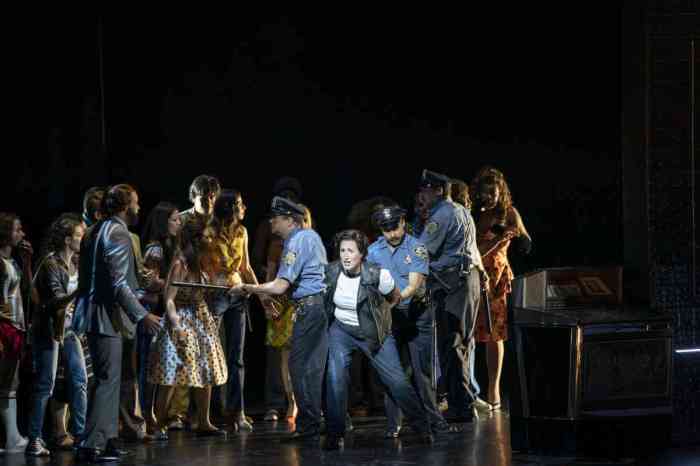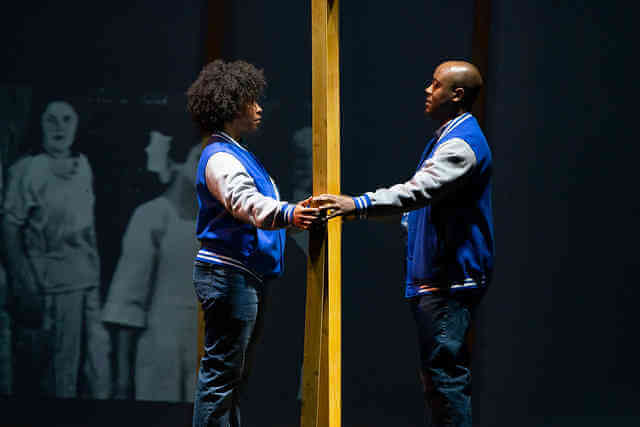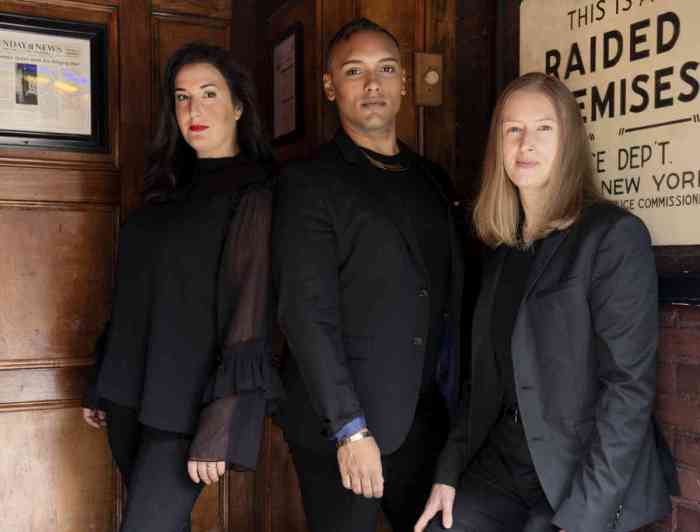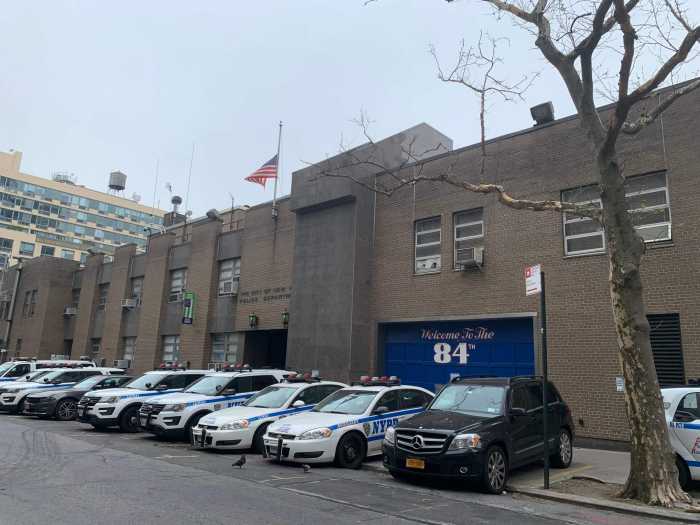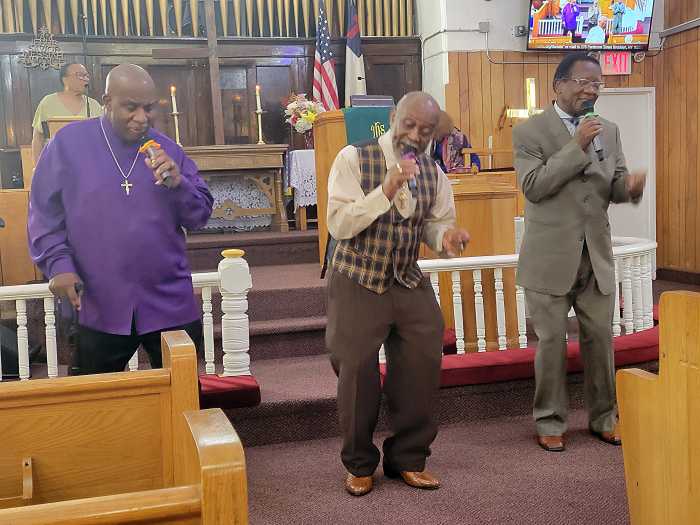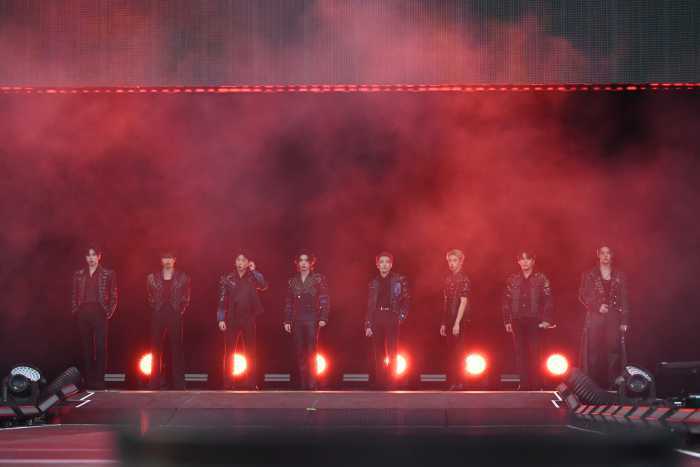Venera Gimadieva and Tim Mix in the Santa Fe Opera production of Rimsky-Korsakov’s “Golden Cockerel.” | KEN HOWARD/ SANTA FE OPERA
Rimsky-Korsakov’s “Golden Cockerel” has re-emerged in the last two years at Sarasota, at New Opera NYC, and now at Santa Fe. On August 3, Emmanuel Villaume led his orchestra thrillingly through the composer’s superb, challenging orchestration. Paul Curran’s spectacular production — witty and visually inventive — made Rimsky-Korsakov’s oddly structured satirical work seem streamlined. Gary McCann’s designs referencing Russian cultural and historical totems and images meshed with Driscoll Otto’s outstanding video projections, including whirling sky charts for Barry Banks’s superbly voiced Astrologer and a flexible, video-only Cockerel echoing Kasia Borowiec’s incisive offstage voice.
Curran — who also wrote the English titles — ensured that the story of a lazy, foolish older ruler seeking to wall out enemies and let down by even more foolish sons (apprentices Richard Smagur and Jorge Espino, singing strongly) found its contemporary resonance, with Tsar Dodon and his much younger foreign consort sporting contemporary Trumpwear (blocky blue suit with red tie, resort wear pantsuit) for the final scene.
Santa Fe presents operas new and old
Replacing bass-baritone Eric Owens, fine baritone Tim Mix performed this definitely bass role with solidity and great good humor, lacking only linguistic finesse. Though Banks declaimed clearly, only the aptly gorgeous Venera Gimadieva offered the needed command of Vladimir Belsky’s pungent text. After a shaky two minutes, the Russian soprano showed the vocal sheen, range, and flexibility to match her remarkable music (and seductive plastique): a rare ideal match of artist to role. Though she “hammed” unduly, Meredith Arwady’s otherwordly contralto and comic impulses were made for Amelfa.
Exciting the next night to hear a sold-out crowd cheer a world première opera and its 40-year old composer (who supplied electronica from within Michael Christie’s large, gleaming orchestra). Mason Bates’ “The (R)evolution of Steve Jobs” — created without either aid or opposition from the late Apple founder’s family or Apple itself — marked a marketing triumph: an extra show was added and Pentatone recorded it live for audio release. Kevin Newbury’s insightfully imagined, dynamic staging made maximal use of Victoria Tzykun’s set — as shiny, multipurpose, and appealing as Apple products. Lighting (Japhy Weideman) and projections (59 Productions) coalesced superbly for a visually entrancing show.
Edward Parks and the Santa Fe Opera Chorus in the world première of Mason Bates’ “The (R)evolution of Steve Jobs.” | KEN HOWARD/ SANTA FE OPERA
The text by justly sought-after librettist Mark Campbell combined genuine wit and poignancy with greeting card-worthy “uplift” and “life lessons,” largely dispensed to the tortured and often cruel Jobs by his Buddhist mentor (Wei Wu, a wonderful bass with superb diction) and his eventual wife Laurene (Sasha Cooke, one of our most sonorous and expressive mezzos). Campbell’s libretto does not entirely avoid the risks inherent in deploying a “Magical Minority” figure to help a white guy get his life together, and the final scenes carry a large dose of Hollywood’s “saved by the love of a good woman” trope. Wu and Cooke’s charismatic performances help (somewhat) to allay the twaddle factor.
The work’s non-linear construction — 18 short scenes between prologue and epilogue — deliberately evokes a “short attention span” aesthetic mirroring the consciously “user-friendly” score. Bates’ orchestrational skill and rhythmic flair crafted something the audience clearly adored; but how would it hold up without Newbury’s dazzling production?
In instrumental aura — if not so much in vocal lines — Bates managed to characterize the leading characters distinctly, a fine achievement for a first-time opera composer. Yet Jobs himself (despite a tireless marathon performance by first-rate lyric bass Edward Parks) had less interesting music to sing than his advisors and the intimate friends he deserted (Steve Wozniak — mature-sounding for the 1970s scenes in Garrett Sorenson’s fulsome tenor — and wronged girlfriend Chrisann, the moving Jessica E. Jones).
Acoustic guitar and Japanese instrumental coloration surrounding Jobs proved thematically and generationally apt choices, but his musical utterances evoked neither his genius nor his bite. As throughout the week, the chorus of young apprentices proved vocally refulgent, furnishing excellent ensemble.
As pre-performance speaker Cori Ellison pointed out, it’s a difficult task to present an opera about recent historical figures and still create drama (as opposed to documentary truth). Bates’ opera moves on to cyberhubs Seattle and San Francisco: it will doubtless draw crowds — and there’s certainly something to enjoy, as one does a slick, smartly produced film — but one wonders what Jobs’ survivors, colleagues, and victims will make of it.
Corrado Rovaris understands Donizetti’s architecture and respected it in opening most all the traditional (and damaging) cuts in “Lucia di Lammermoor”: even the usually shed post-Mad Scene recit scene for Raimondo and Normanno, which — done intensely with its curse and quiet ending — seemed like a source for the “Simon Boccanegra” Council Chamber Scene. Rovaris also secured the services of a brilliant glass harmonica, eerily effective in the Mad Scene. Pacing was largely swift, the singers well supported. The largely abstract sets yielded little information or nuance, unlike the fine costumes — mainly early Victorian but in the opening scene rather “Game of Thrones,” with menacing furs and dark leathers.
Ron Daniels scored two directorial twists: Zachary Nelson’s semi-nude Enrico made clear his incestuous passion for his sister, and a spectral Lucia reappeared (through the same trap door that had earlier disclosed the lit turtle exhibit-like fountain), welcoming Edgardo to unity in death.
Zack Winokur’s fiery quartet of male dancers provided the week’s most original and apposite choreography. The three leads were American singers resident in German ensembles.
Like most Lucias I’ve heard (Mariella Devia the main exception), the gifted Brenda Rae’s tall, sympathetic heroine was pleasing but less than magical in her initial scenes; only with “Soffriva nel pianto” did sufficient warmth and emotional coloration enter her tone. Gaining confidence, she amazed us with her scale work and Mad Scene staccati. She phrased musically, but greater verbal pointing would deepen an already impressive portrait.
An excellent Latinate tenor with well-projected words and tone, Mario Chang sang softly enough for me to wish that he incorporated more restraint into his dynamic palette. The usually excellent Nelson was forceful but uncharacteristically rather rough as Enrico (a cold?). Christian Van Horn (Raimondo) proved enormously impressive vocally and stylistically; Carlos Santelli (Arturo) showed a light, promising tenor.
Back in New York, the Armory enlivened a recital-light scene with a splendid evening (August 9) with Lawrence Brownlee, appearing in two of the snazzily restored intimate rooms with two young pianists already eminent in their fields. First, accompanied by the supremely musical Myra Huang, Brownlee offered a few old Italian songs, followed by selections by the three leading bel canto composers who have brought him some of his greatest worldwide triumphs. Scarlatti’s “Gia il sole dal Gange” and Rossini’s “L’esule” proved particular highlights, but all selections were marked by perfect technique, sunny tone, and excellently projected Italian. What tenor since Pavarotti has reliably offered the same pleasing virtues at his every appearance?
Jazz great Jason Moran collaborated amiably on the second part, jazz and rock standards by Duke Ellington, Johnny Hartman, Johnny Mathis, and others. “I am not a jazz singer,” Brownlee said, but, buoyed by his style-drenched colleague, he caught the idiom, again providing crystalline diction. The climactic number the two world-class African-American artists offered was a moving version of the death-haunted, all-too relevant Spiritual, “There’s a man coming around taking names.”
David Shengold (shengold@yahoo.com) writes about opera for many venues.



